Surprisingly Simple Stretches to Say Sayonara to Soreness
Soreness and stiffness are common experiences for people of all ages, often resulting from long periods of sitting, repetitive movements, or even intense workouts. While these aches may seem inevitable, incorporating a few simple, targeted stretches into your daily routine can make a remarkable difference in how you feel. Stretching not only eases tight muscles but also promotes better posture, circulation, and overall flexibility—all essential for maintaining an active and comfortable lifestyle. Whether you work a desk job, lead a busy life chasing after kids, or regularly hit the gym, these gentle movements can help alleviate discomfort and prevent future strains. Beyond the physical benefits, stretching offers a much-needed mental break. With each slow, deep breath, you can calm the mind and reduce stress. The beauty of these 23 stretches is their adaptability: you can perform them at home, in the office, or even outdoors without any special equipment. Over time, you’ll likely notice a reduction in tension and a greater sense of ease, proving that saying goodbye to soreness can be simple and effective.
1. Neck Tilts

Neck tilts are a gentle yet effective way to release tension in one of the most commonly tight areas of the body. Modern life, with its constant reliance on screens and digital devices, often leads to stiffness around the neck and shoulders. This simple movement can help counteract that tightness by elongating the muscles that support your head and spine. To perform neck tilts, begin by sitting or standing tall, shoulders relaxed. Slowly tilt your head to the right, aiming your ear toward your shoulder but never forcing the movement. Hold this position for around 10 to 15 seconds, breathing deeply. Return your head to center, then repeat on the left side. You can also tilt your head forward to gently stretch the back of the neck, or tilt it backward (carefully) to open the front. Neck tilts can be done throughout the day—at your desk, during breaks, or while watching TV—to relieve minor aches. Combined with good posture habits, they’re an excellent way to prevent tension headaches and upper-body stiffness. Consistency is key; performing neck tilts regularly can help maintain flexibility and range of motion, ensuring a more comfortable and relaxed neck region.
2. Shoulder Rolls
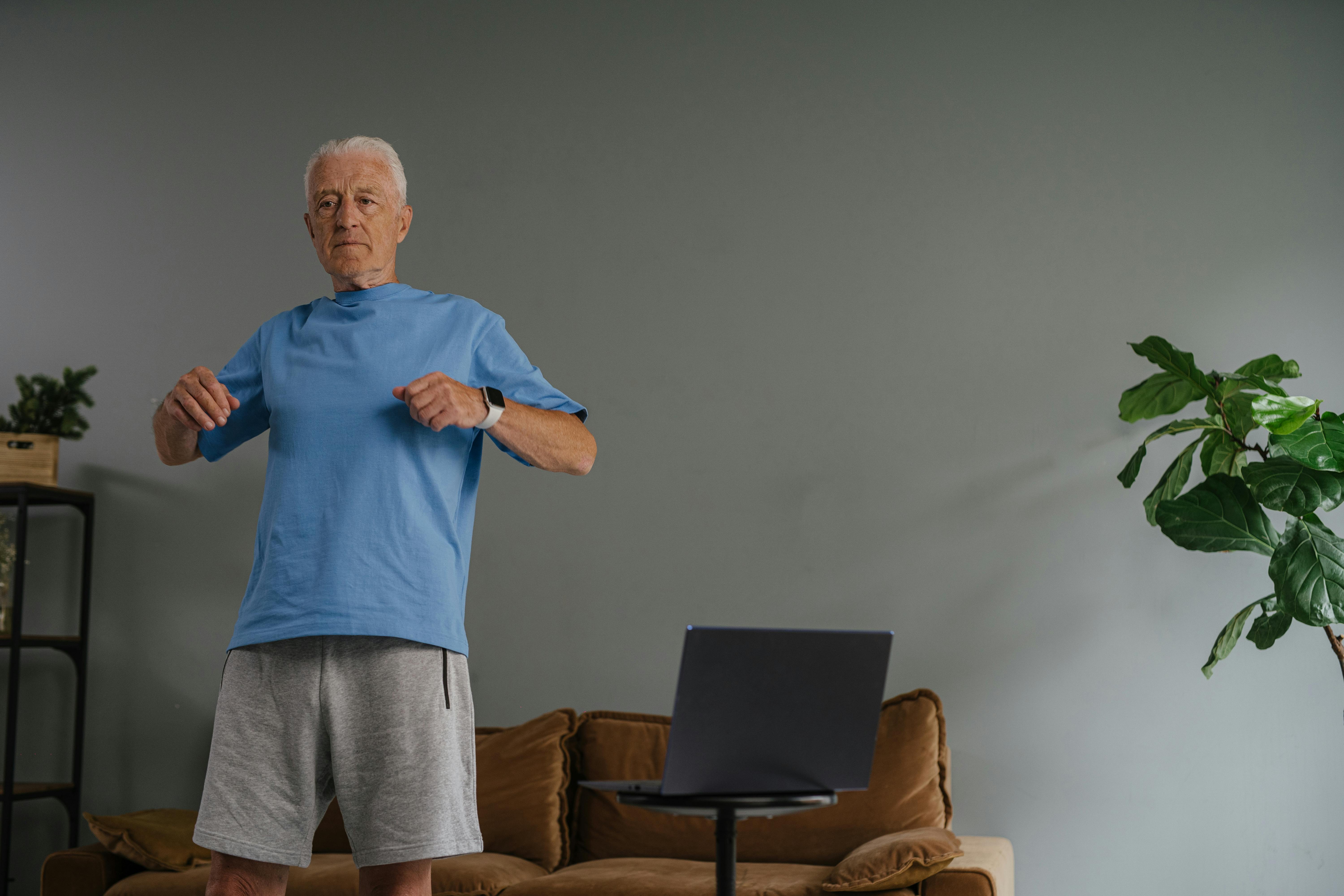
Shoulder rolls are one of the easiest ways to combat the negative effects of poor posture and a sedentary lifestyle. Whether you’re hunched over a keyboard or carrying stress in your shoulders, this simple move can loosen tight muscles, improve circulation, and recalibrate your posture. Plus, it can be done virtually anywhere—no equipment or special clothing required. Begin either seated or standing with feet about hip-width apart. Let your arms relax at your sides and keep your back straight. Slowly lift both shoulders up toward your ears, then roll them back in a smooth, circular motion before lowering them down. Aim for a small, controlled movement rather than a jerky or rushed motion. Perform 8 to 10 circles in this backward direction, then switch to rolling them forward for another 8 to 10 reps. Focus on pairing the movement with slow, steady breaths. Inhale as your shoulders rise, exhale as they roll back and down. This breathing pattern helps calm your mind and encourages deeper muscle relaxation. Shoulder rolls can be done as a quick energizer during busy workdays or included in a longer stretching routine to combat daily stiffness, making them a must-have stretch for nearly everyone.
3. Standing Side Stretch
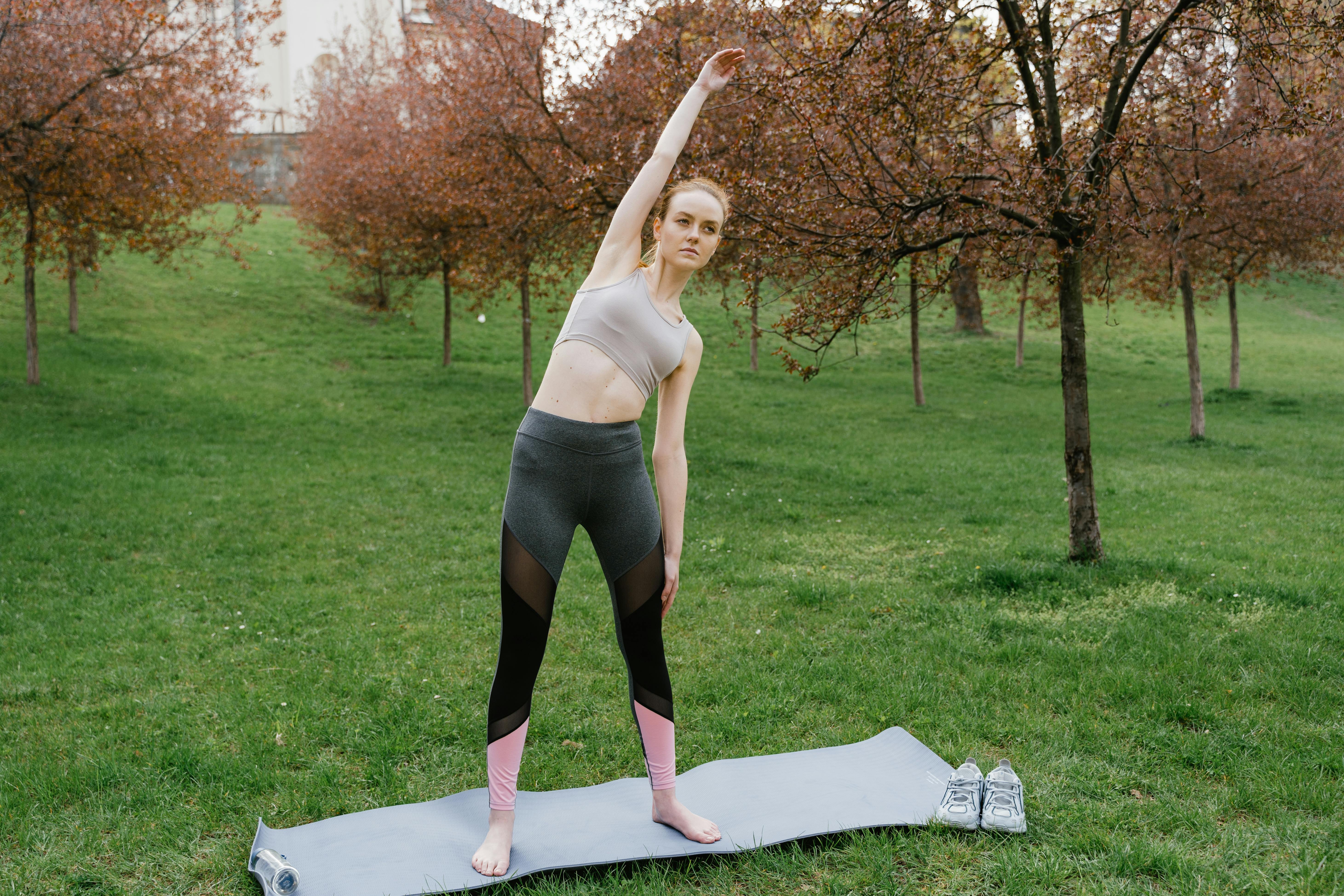
The standing side stretch is a gentle way to open your rib cage, elongate the muscles along your torso, and alleviate tension in your waist and lower back. It’s especially beneficial for individuals who feel “crunched” after sitting at a desk or staying in one position for too long. By incorporating this easy move, you can enhance lateral flexibility and potentially reduce discomfort related to poor posture. To begin, stand with your feet roughly hip-width apart, ensuring your weight is evenly distributed. Inhale deeply, lifting one arm overhead while the other arm rests by your side or lightly touches your hip. As you exhale, gently tilt your upper body away from the raised arm—imagine you’re bending sideways at the waist. Keep your hips stable, and avoid twisting your torso or overextending your back. Hold this side-lean for about 10 to 15 seconds, inhaling slowly. Return to an upright position, then switch arms to stretch the opposite side. While performing this move, focus on elongating through your fingertips and keeping your neck relaxed. You should feel a mild pull along the side of your rib cage, lower back, and hip. Regular practice can help increase flexibility, improve spinal alignment, and combat everyday stiffness.
4. Seated Forward Bend
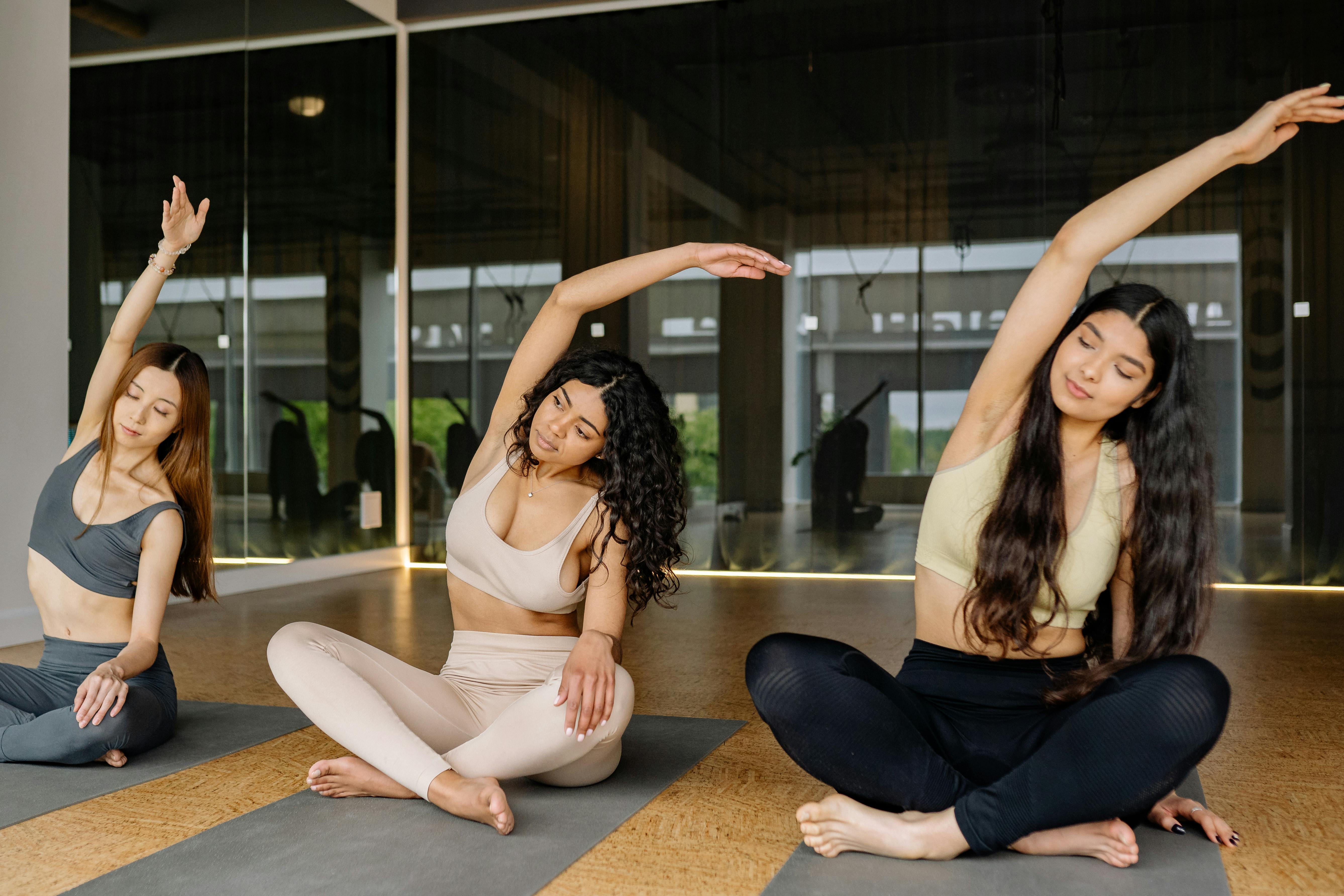
Seated forward bends can be performed on a chair or on the floor, making them versatile for all ages and fitness levels. This simple stretch targets the hamstrings, lower back, and even the upper back if you gently extend your arms toward your toes or the floor. Its soothing, grounding nature also helps calm the mind, making it a great midday or evening relaxation stretch. On the floor, sit with your legs extended in front of you, spine tall. If your hamstrings are tight, keep a slight bend in your knees or place a rolled towel under them for support. Inhale deeply to lengthen your torso, then exhale as you fold forward from the hips, reaching your hands toward your feet (or shins). Avoid rounding your back excessively—think about hinging from the waist and leading with your chest. If you prefer a chair, sit at the edge, feet planted hip-width apart. Gently fold forward, letting your arms and head relax toward the ground. If needed, rest your arms on your thighs for partial support. Hold the stretch for 15 to 30 seconds while breathing slowly. Over time, you may notice better hamstring flexibility and relief from lower-back tension.
5. Chest Opener Against a Wall

A chest opener stretch against a wall is an excellent remedy for the hunched-forward posture so many of us adopt while typing or texting. When you open the chest and shoulders, you help counteract rounded shoulders and stiffness in the upper body. This can reduce aches between the shoulder blades and foster better postural alignment. Stand about a foot’s length away from a wall, turning to place one palm flat on it at shoulder height. Your arm should be slightly behind your torso, elbow just soft enough to avoid locking. Gently rotate your body away from the wall until you feel a comfortable stretch across your chest, anterior shoulder, and possibly down your arm. Hold this position for roughly 15 to 30 seconds, breathing steadily. If you feel any pain, ease off or reposition your arm to a different angle. Switch sides to maintain balance. This move can be done multiple times a day, especially if you find yourself slouching or feeling tight in the upper body. Over time, it may improve your ability to stand straighter and breathe more deeply, as an open chest facilitates better lung expansion. Pair this with shoulder rolls for a quick, revitalizing upper-body routine.
6. Seated Spinal Twist

A seated spinal twist is a mainstay in many stretching or yoga routines, and for good reason. This simple move targets the entire length of your spine, promoting mobility and releasing tension in the back muscles. It can also help alleviate discomfort in the shoulders and hips, as it gently rotates the torso and aligns the posture. Begin seated on the floor with both legs extended. Bend one knee and cross it over the opposite leg, placing your foot on the floor beside the extended thigh. If this is uncomfortable, sit on a small cushion or keep the bottom leg slightly bent. Inhale to lengthen your spine, imagining a string pulling the top of your head upward. On an exhale, twist your torso toward the bent knee, resting one hand behind you and the other arm hugging or gently pressing against the bent knee. Avoid straining; aim for a comfortable rotation. Hold for 10 to 20 seconds while breathing deeply, then slowly unwind and repeat on the other side. If you’re at a desk or prefer a chair, simply cross one leg over the other and twist in the same manner. Over time, this twist can help improve spinal health and ease mid-back soreness.
7. Calf Stretch
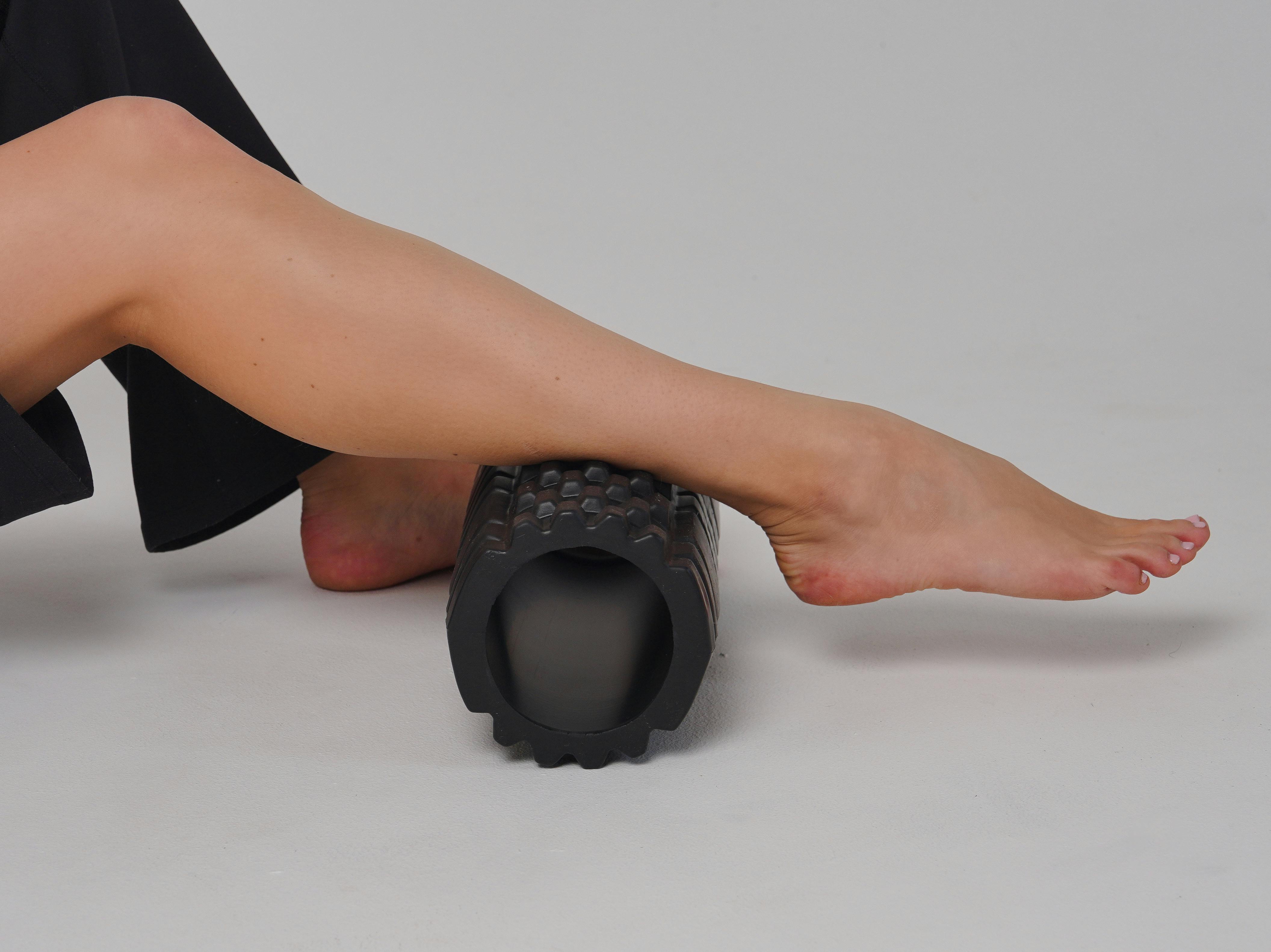
Tight calves can lead to discomfort in the feet, ankles, and even the lower back. The calf stretch is a straightforward way to target these often-overlooked muscles. Whether you’re a runner, a frequent walker, or someone who stands for long hours, this stretch can help prevent stiffness and improve your gait. Find a wall or sturdy chair for balance. Stand an arm’s length away with feet parallel. Step one foot back, keeping the heel pressed to the floor and the back leg straight. Bend the front knee slightly while ensuring the back is upright. You’ll feel a stretch running down the back of your lower leg. Hold this position for 15 to 20 seconds, breathing slowly. For a deeper stretch, you can bend your back knee just a bit, targeting the soleus muscle (the deeper calf muscle). After holding on one side, switch legs. During each repetition, pay attention to your posture—avoid letting your hips sway or your lower back arch. Regular calf stretching not only helps alleviate existing soreness but may also improve ankle range of motion and balance, lowering the risk of slips or falls. It’s a quick, effective way to keep the lower legs limber and pain-free.
8. Hip Flexor Lunge
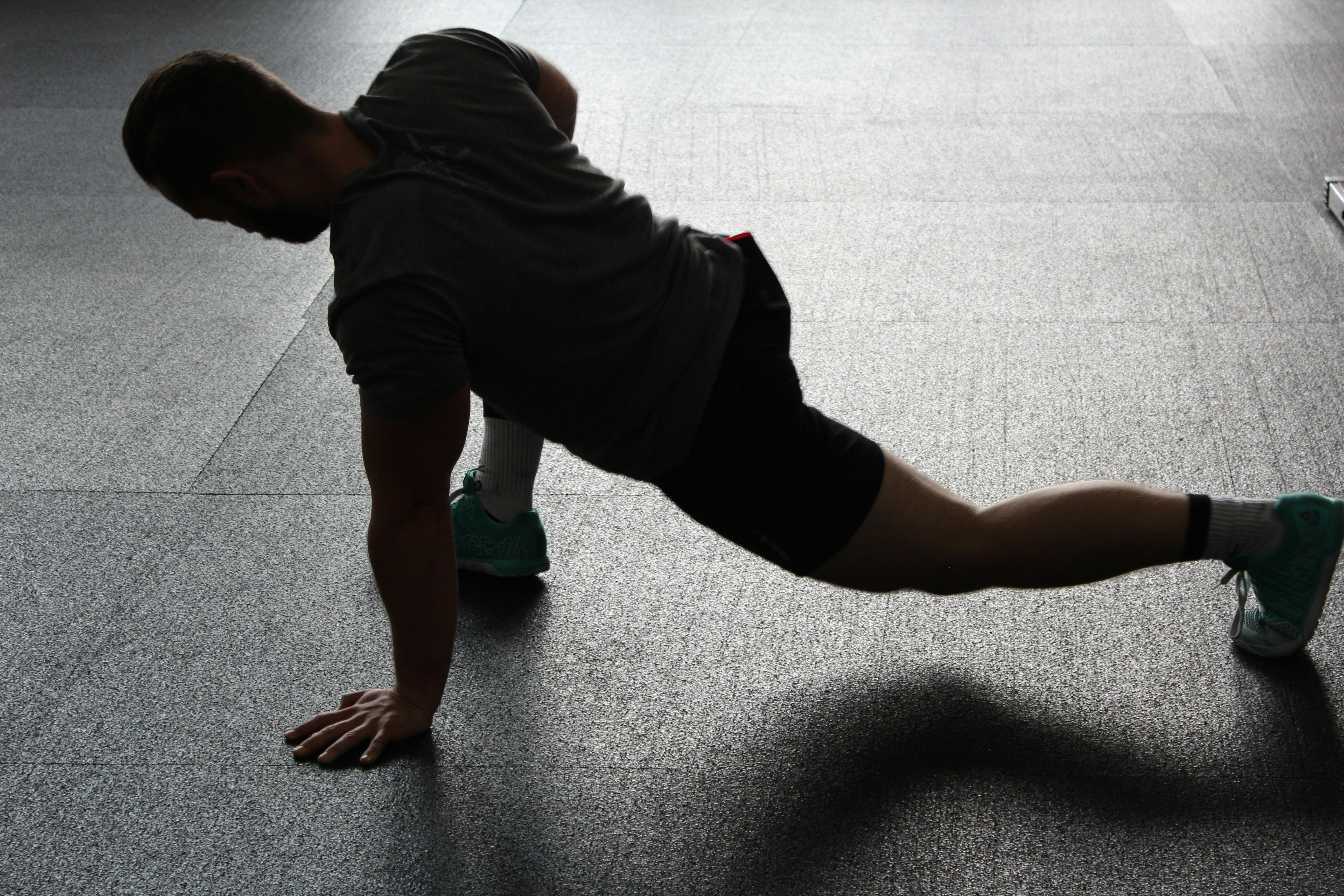
Hip flexors are frequently tight in modern life due to prolonged sitting, driving, or cycling. When these muscles become shortened, they can cause lower-back discomfort and limit mobility. A gentle hip flexor lunge is an excellent way to lengthen this region, promoting better posture and more comfortable movement patterns. Begin by kneeling on a soft surface, such as a yoga mat. Place one foot in front of you so that your front knee forms about a 90-degree angle. Keep your torso upright, and gently shift your weight forward until you feel a stretch along the front of the hip on the kneeling leg. Avoid overarching your lower back—engage your core to stabilize. Hold for 15 to 30 seconds, breathing deeply. To intensify, you can raise the arm on the same side as the kneeling leg and lean slightly away from that side, targeting the hip flexor more directly. Switch legs and repeat. If kneeling on the floor feels uncomfortable, you can perform a standing variation by placing one foot on a chair seat behind you, creating a similar angle. Regular hip flexor stretches can relieve lower-back strain, improve walking or running form, and help correct posture imbalances caused by too much sitting.
9. Child’s Pose (Yoga-Inspired)
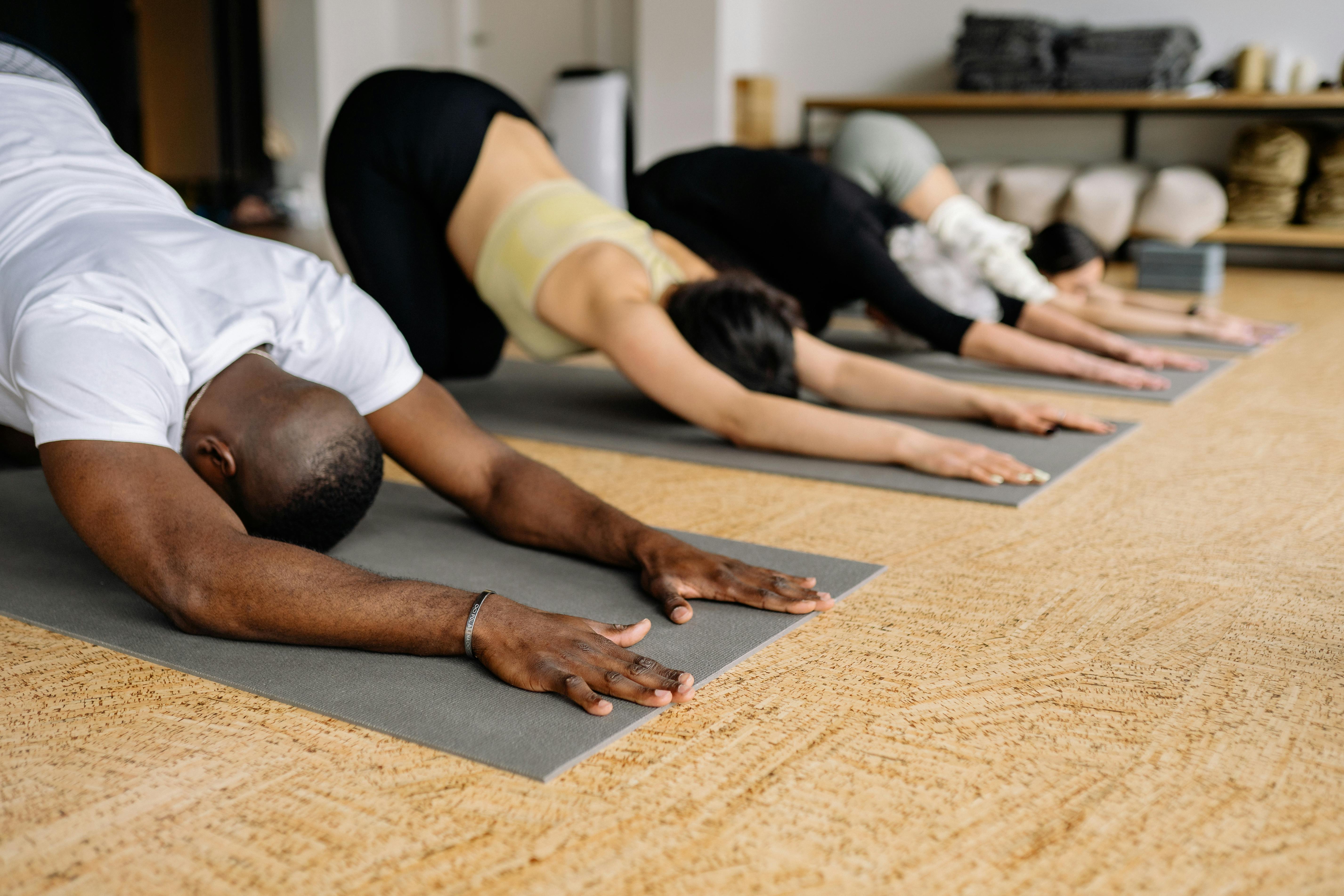
Child’s Pose, a classic yoga posture, is renowned for its relaxing and restorative effects. By gently stretching the lower back, hips, and shoulders, it helps relieve tension accumulated from daily stressors or intense workouts. This pose also encourages mindful breathing, allowing you to calm the mind and restore a sense of balance. To begin, kneel on the floor with your knees around hip-width apart. Sit your hips back onto your heels and fold your upper body forward. Extend your arms out in front, palms resting on the ground, or allow them to drape by your sides for a more restful version. If your forehead doesn’t comfortably reach the floor, place a pillow or folded towel beneath it to keep your neck relaxed. Focus on slow, steady inhales and exhales. Many people find that Child’s Pose eases lower-back strain while gently opening the shoulders. It’s also a great counterpose after movements that compress the spine, such as sitting for prolonged periods. Spend anywhere from 20 seconds to a full minute here, depending on how your body feels. This simple, nurturing posture can be done in the morning to awaken your spine or in the evening to wind down and relieve tension.
10. Cat-Camel Stretch
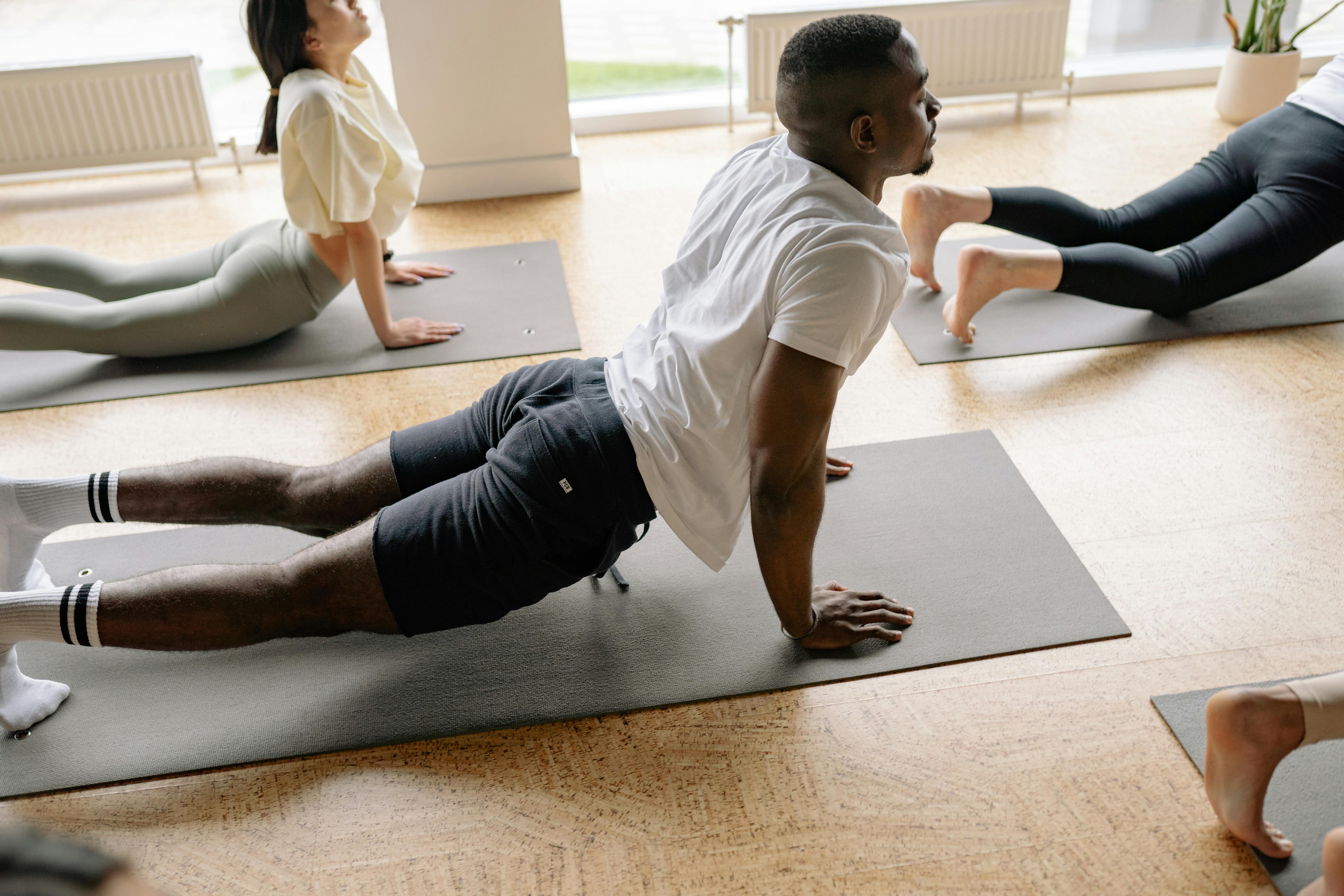
The Cat-Camel (sometimes called Cat-Cow in yoga) is a fluid, dynamic stretch that warms up the spine and relieves tension across the back and torso. By alternating between rounding and arching the spine, you promote flexibility, loosen up tight muscles, and enhance circulation around the vertebrae. Begin on all fours with your hands directly under your shoulders and your knees under your hips. Spread your fingers for stability, keeping your neck in a neutral position. On an inhale, arch your back gently, lifting your chest and tailbone upward. This is the “camel” or “cow” position. Then, as you exhale, round your spine upward, tucking your chin toward your chest and your tailbone toward your knees (the “cat” position). Take it slow and use your breath as a guide. Repeat this sequence for 8 to 10 cycles, focusing on feeling each vertebra move. Keep your movements smooth and controlled, avoiding any jerky transitions. The Cat-Camel stretch can serve as a great warm-up before exercise, a midday release from sitting, or a calming evening routine. Its ability to mobilize the entire spine makes it a favorite among people looking to reduce lower-back soreness, neck tension, or general stiffness.
11. Quad Stretch

Tight quadriceps can lead to misalignment in the hips, strain in the knees, and reduced range of motion in the lower body. The standing quad stretch is a simple yet powerful way to keep these large muscles flexible and your lower body functioning smoothly. This is particularly beneficial if you spend long hours standing or engaging in repetitive motions. To start, stand with feet hip-width apart, holding onto a stable surface for balance if needed. Bend one knee, bringing your foot toward your glutes. Grasp your ankle or the top of your foot with the corresponding hand, keeping your knees close together. Feel a gentle stretch in the front of your thigh. If you can’t comfortably reach your foot, use a towel or resistance band looped around it. Keep your torso upright and your core engaged—avoid arching your lower back. Hold for 15 to 30 seconds, then switch legs. Aim to do this after you’ve warmed up a bit or after a workout when muscles are more pliable. Consistent quad stretching can help prevent muscle imbalances that contribute to knee pain, support better walking or running form, and complement a hip flexor routine to maintain balanced mobility around the hips.
12. Figure-Four Glute Stretch
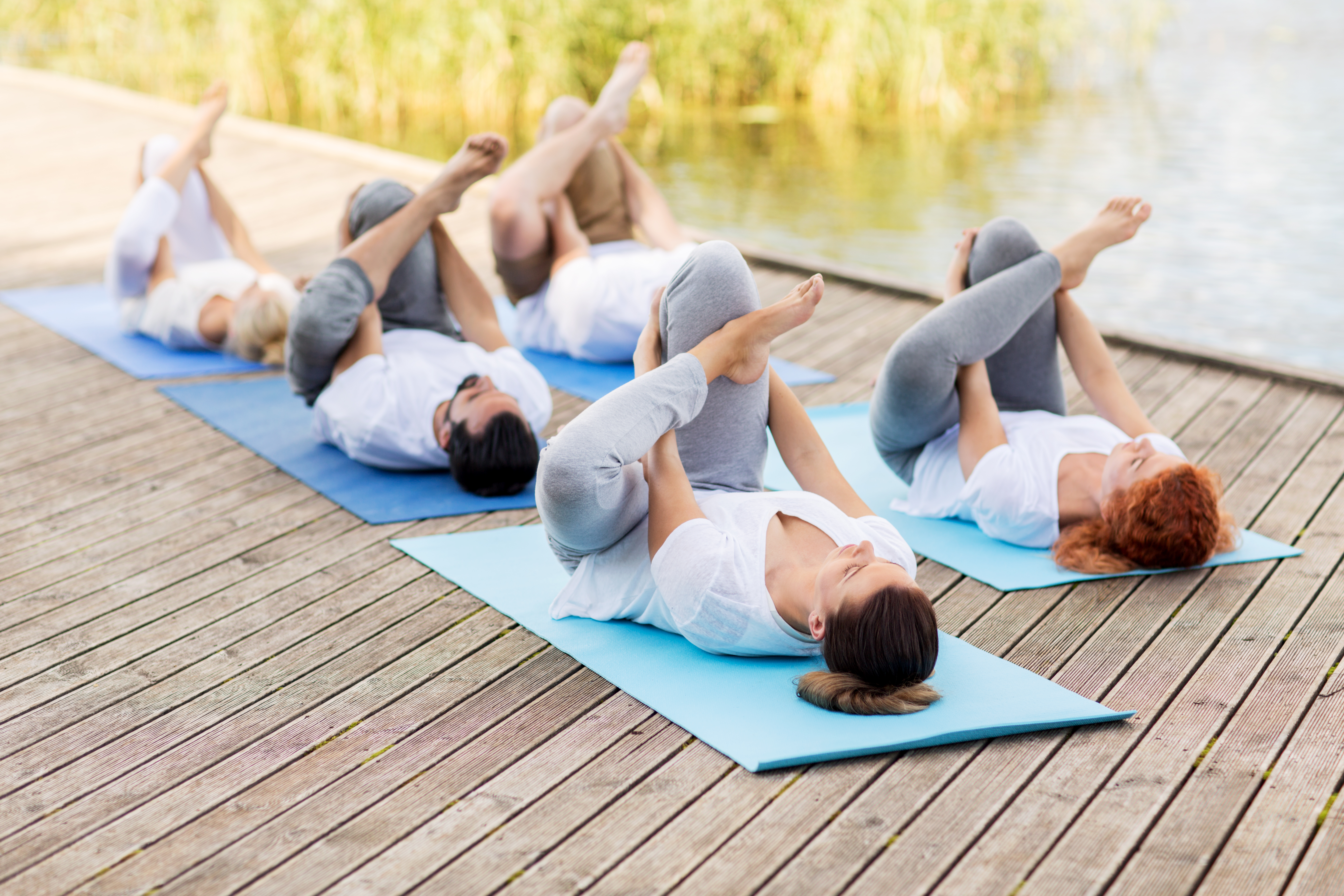
The figure-four glute stretch is a lifesaver for tight hips and lower-back tension. By targeting the gluteus maximus and the smaller piriformis muscle, this move often helps alleviate sciatica-like symptoms and eases discomfort in the posterior chain. It can be done on the floor or seated on a chair, making it accessible to people of various fitness levels. Lie on your back (or sit upright if doing a seated version). Cross one ankle over the opposite thigh, forming a “4” shape with your legs. If on your back, reach your hands behind the thigh that’s still on the ground and gently draw it toward your chest, keeping your shoulders relaxed against the floor. If seated, you can lean forward slightly, maintaining a straight back. In both cases, you should feel a deep stretch in the glutes and possibly the outer hip of the crossed leg. Breathe slowly, holding the position for 15 to 30 seconds before switching sides. Avoid forcing the stretch—moderate tension is fine, but never push into pain. Incorporating this move into a daily or weekly routine can improve hip mobility, reduce lower-back strain, and support better posture during activities like walking, running, or lifting.
13. Ankle Circles

Ankle circles are a straightforward yet effective way to boost lower-leg mobility and keep your feet flexible. This stretch is especially valuable if you stand or walk frequently, engage in sports, or deal with swelling in the ankles. By improving range of motion and encouraging better circulation, ankle circles can help prevent stiffness and reduce the risk of minor injuries. Begin either seated or standing—just make sure you can freely move one foot off the ground. Lift that foot slightly, pointing your toes forward. Slowly rotate the ankle in a circular motion, making sure the movement is controlled rather than jerky. Perform 8 to 10 rotations in one direction, then reverse for another 8 to 10 circles. Switch feet and repeat. If standing, hold onto a stable chair or table for balance. Focus on isolating the movement at the ankle rather than moving your leg or hip. You can also flex and point your toes after each set of circles to further enhance flexibility. As simple as it sounds, adding ankle circles to your daily routine can help alleviate tension in the calves and feet while laying the groundwork for better balance and overall foot health.
14. Overhead Arm Stretch
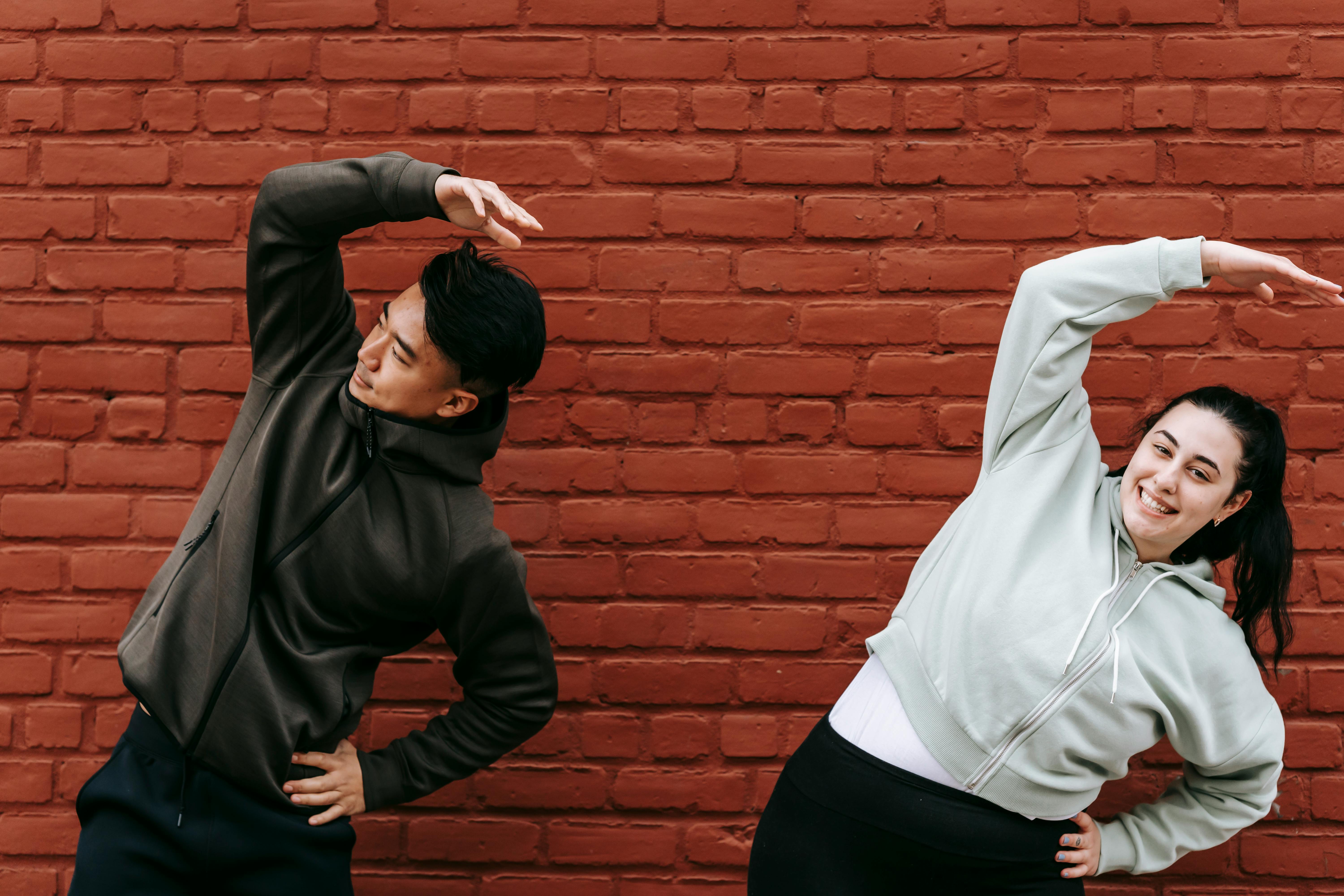
The overhead arm stretch is often overlooked, yet it provides a wonderful release for tight shoulders, upper back muscles, and the sides of your torso. By reaching up and lengthening your spine, you can counteract the compression that comes from sitting hunched over desks and devices throughout the day. This stretch also encourages deep, mindful breathing—opening the chest and rib cage to allow more oxygen intake. Stand with your feet hip-width apart, arms relaxed at your sides. Interlace your fingers in front of you, then rotate your palms outward as you raise your arms overhead on an inhale. Keep your shoulders down and back, resisting the urge to shrug. Focus on lengthening from your fingertips down through your rib cage. You can softly arch your upper back to intensify the stretch, but avoid overarching the lower back. Exhale as you relax out of the pose. Hold the stretch for 10 to 20 seconds, maintaining steady breaths. If you like, you can incorporate a gentle side bend by leaning left or right while your arms remain overhead. This variation targets the latissimus dorsi and oblique muscles, giving your torso an all-around stretch. Practiced regularly, the overhead arm stretch can help relieve shoulder tension and enhance posture.
15. Wrist & Forearm Stretch
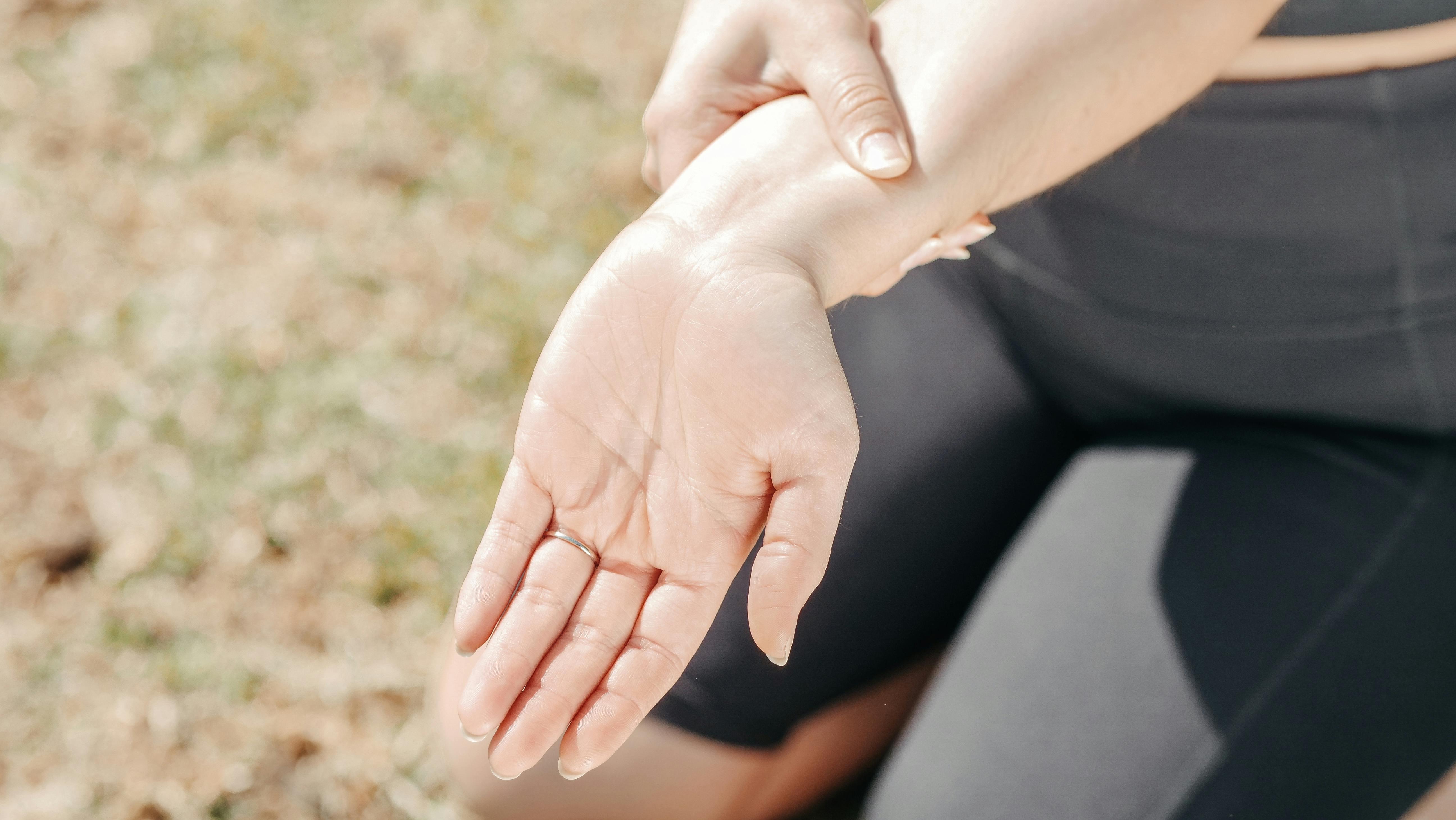
In a world dominated by keyboards, smartphones, and repetitive hand movements, wrist and forearm stretches are essential for maintaining comfort and preventing strain-related issues like carpal tunnel syndrome. By improving flexibility and circulation in these smaller muscles, you can lessen aches and reduce fatigue that often arises from long periods of typing or texting. To do this stretch, extend one arm forward at shoulder height with the palm facing down. Gently use your opposite hand to pull the fingertips back toward you, feeling a stretch along the top of your wrist and forearm. Keep your shoulder relaxed and your elbow straight but not locked. Hold for 10 to 15 seconds, then rotate the palm to face upward, repeating the stretch for the underside of the forearm. Switch arms and repeat. For added relief, you can also gently roll the wrists in circles after each stretch. This move is quick and can be performed at regular intervals during the workday to ward off tension. Coupled with good desk ergonomics—such as using a wrist pad or adjusting chair and desk heights—wrist and forearm stretches help ensure healthy range of motion and can significantly reduce daily hand or forearm fatigue.
16. Bear Hug Stretch – Give Yourself Some Love!

Sometimes, all you need is a big hug—even if it’s from yourself! The bear hug stretch is a simple yet effective way to release tension in your upper back, shoulders, and even your neck. It’s particularly useful for people who spend hours hunched over computers or constantly scrolling on their phones. To do this stretch, stand or sit up tall with your back straight. Extend your arms out wide, as if you’re about to hug someone. Then, cross them in front of your chest, wrapping each arm around the opposite shoulder. Gently squeeze, pulling your shoulder blades apart while slightly rounding your upper back. Hold this position for 15 to 20 seconds, taking deep breaths to enhance relaxation. Afterward, switch the arm placement so the opposite arm is on top and repeat. This movement counteracts poor posture, improves flexibility, and even gives you a moment of self-care during a busy day.
17. The Flamingo Stretch – Balance and Loosen Up
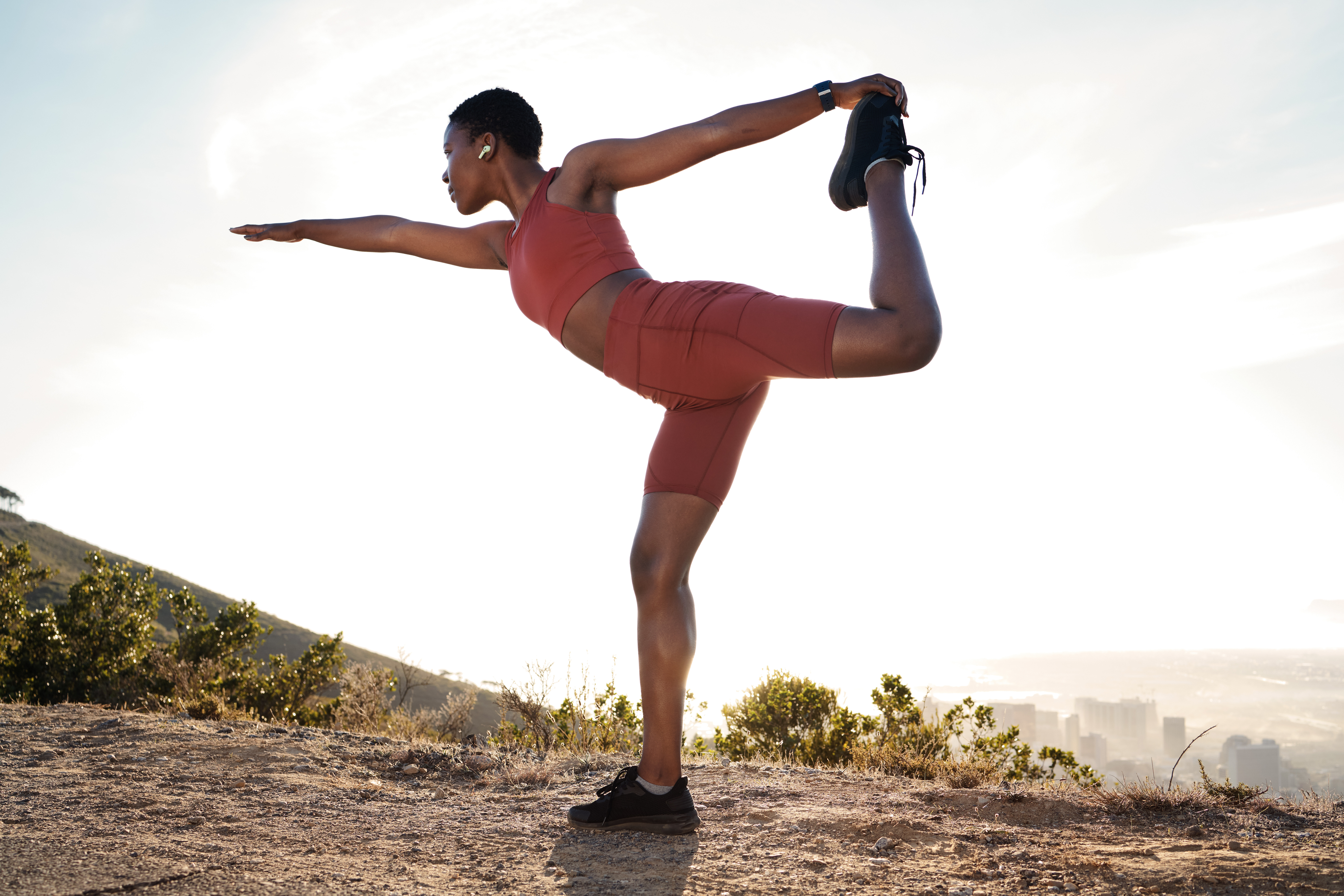
Channel your inner flamingo with this fun and effective balance and flexibility stretch. The flamingo stretch primarily targets your quadriceps and hip flexors while also helping to improve coordination and stability. To perform this stretch, stand tall with your feet hip-width apart. Bend one knee, bringing your foot up behind you. Reach back with the same-side hand to grasp your ankle, keeping your knees together and your core engaged. If balancing is a challenge, use a wall or chair for support. Hold the stretch for 20 seconds, focusing on keeping your chest upright and avoiding any excessive arching in your lower back. Release and switch legs. This stretch is particularly beneficial for runners, athletes, or anyone who spends long hours standing. Not only does it improve flexibility in the quads, but it also strengthens the muscles needed for good posture, making everyday movements more comfortable and effortless.
18. Cactus Arm Stretch – Open Up Your Chest Like a Desert Bloom
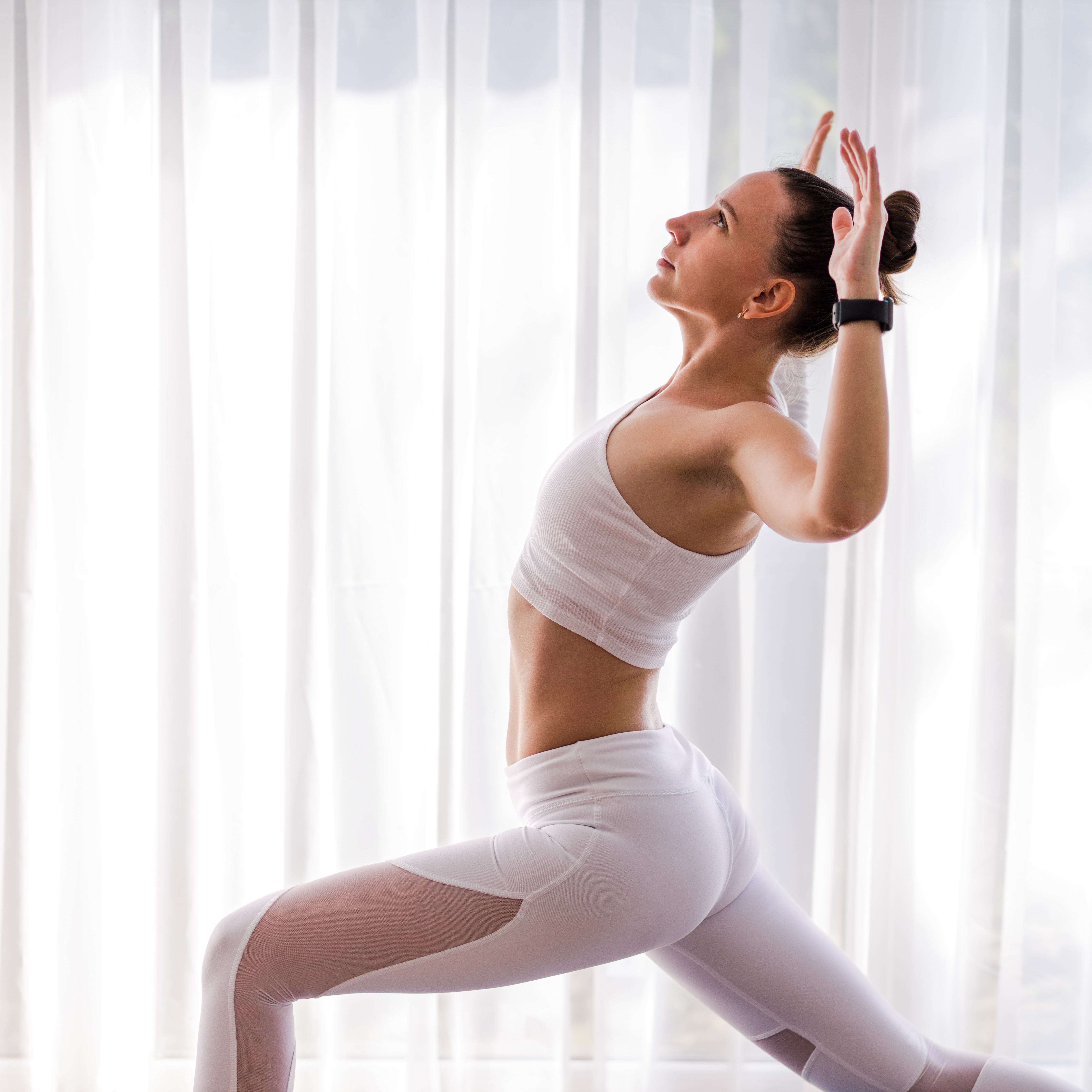
The cactus arm stretch is a fantastic way to counteract the tightness and stiffness that comes from long hours of sitting or working at a desk. It focuses on opening up the chest, shoulders, and upper back while also improving posture. To perform this stretch, stand or sit with your back straight and raise your arms into a goalpost position, forming 90-degree angles at the elbows. Keep your palms facing forward and gently squeeze your shoulder blades together, expanding your chest. You should feel a deep stretch across your front body. Hold this position for 20 seconds, making sure to breathe deeply and relax into the stretch. If you want to deepen the movement, stand near a doorway and place your hands against the frame before gently leaning forward. This stretch is excellent for preventing "tech neck" and rounded shoulders while making you feel more open, confident, and energized.
19. Happy Baby Stretch – Because Adults Need Playtime Too
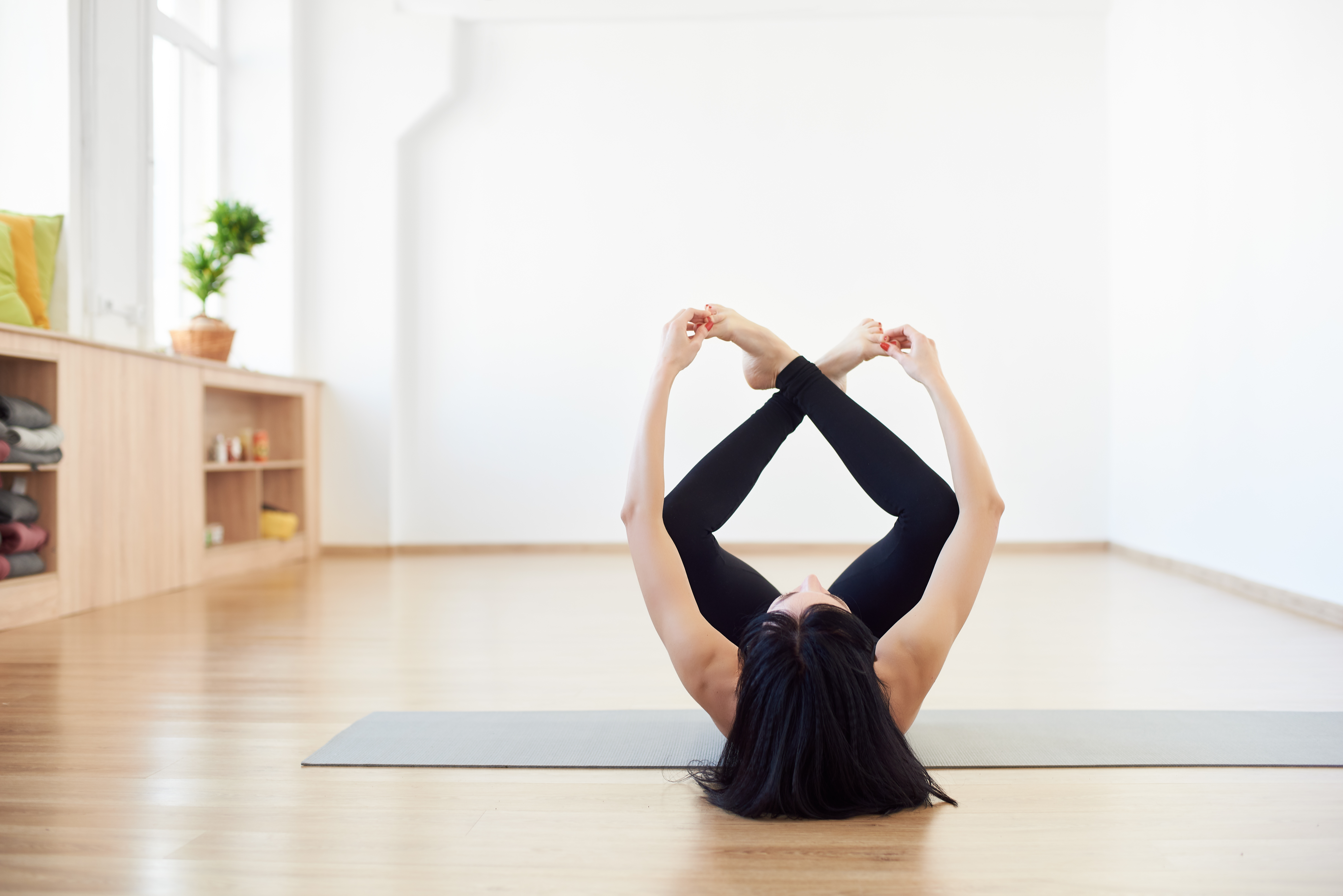
Inspired by how babies naturally stretch and move, the happy baby pose is a playful and highly effective way to release tension in your lower back, hips, and inner thighs. This stretch is particularly beneficial for anyone dealing with tight hips, sciatica, or post-workout stiffness. To do it, lie on your back with your knees bent and feet lifted. Grab the outsides of your feet (or your shins if that’s more comfortable) and gently pull your knees toward the floor while keeping your back relaxed. Your shins should be perpendicular to the floor, and you can rock side to side for a gentle lower-back massage. Hold this stretch for about 30 seconds, taking slow, deep breaths. It’s a fantastic stretch to include in your bedtime routine, as it helps release built-up tension and promotes relaxation. Plus, it’s a reminder that sometimes, moving like a kid is the best thing for your body!
20. The Spaghetti Noodle Stretch – Let Everything Go
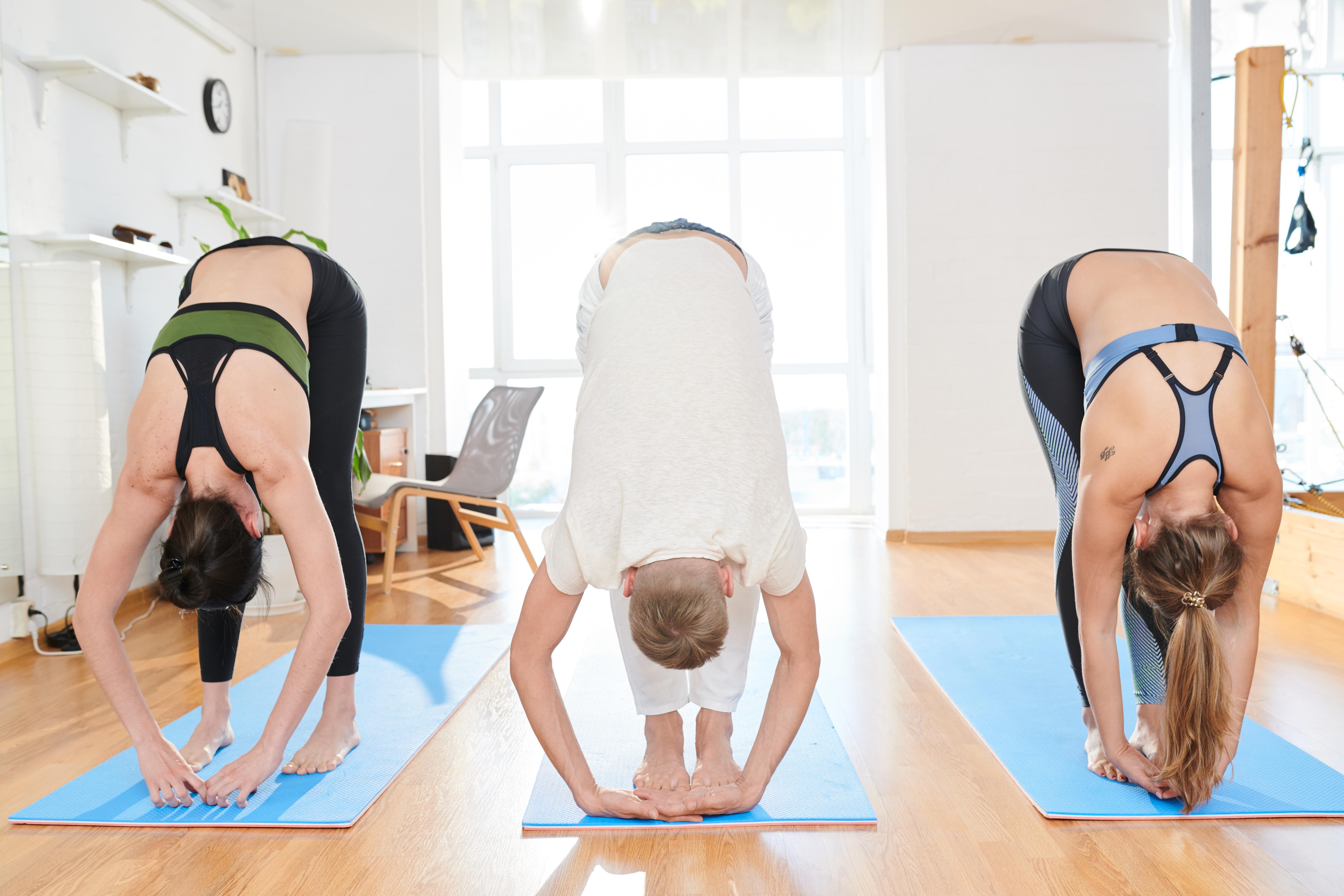
This stretch is all about relaxing and letting go, much like a cooked spaghetti noodle flopping onto a plate! It’s an excellent way to release built-up tension in the spine, shoulders, and hamstrings while improving circulation. To begin, stand up tall with your feet hip-width apart. Slowly bend forward from your waist, letting your arms, head, and torso hang freely toward the floor. Keep your knees slightly bent if your hamstrings feel too tight. Once in the forward fold, gently sway side to side, letting your arms dangle like loose noodles. Take slow, deep breaths and hold the stretch for about 20 to 30 seconds. When you’re ready to come back up, roll up slowly, stacking each vertebra one at a time. This stretch not only eases physical tension but also provides a mental reset, making it a great choice for anyone feeling stiff or stressed throughout the day.
21. The Starfish Stretch – Reach for the Sky!
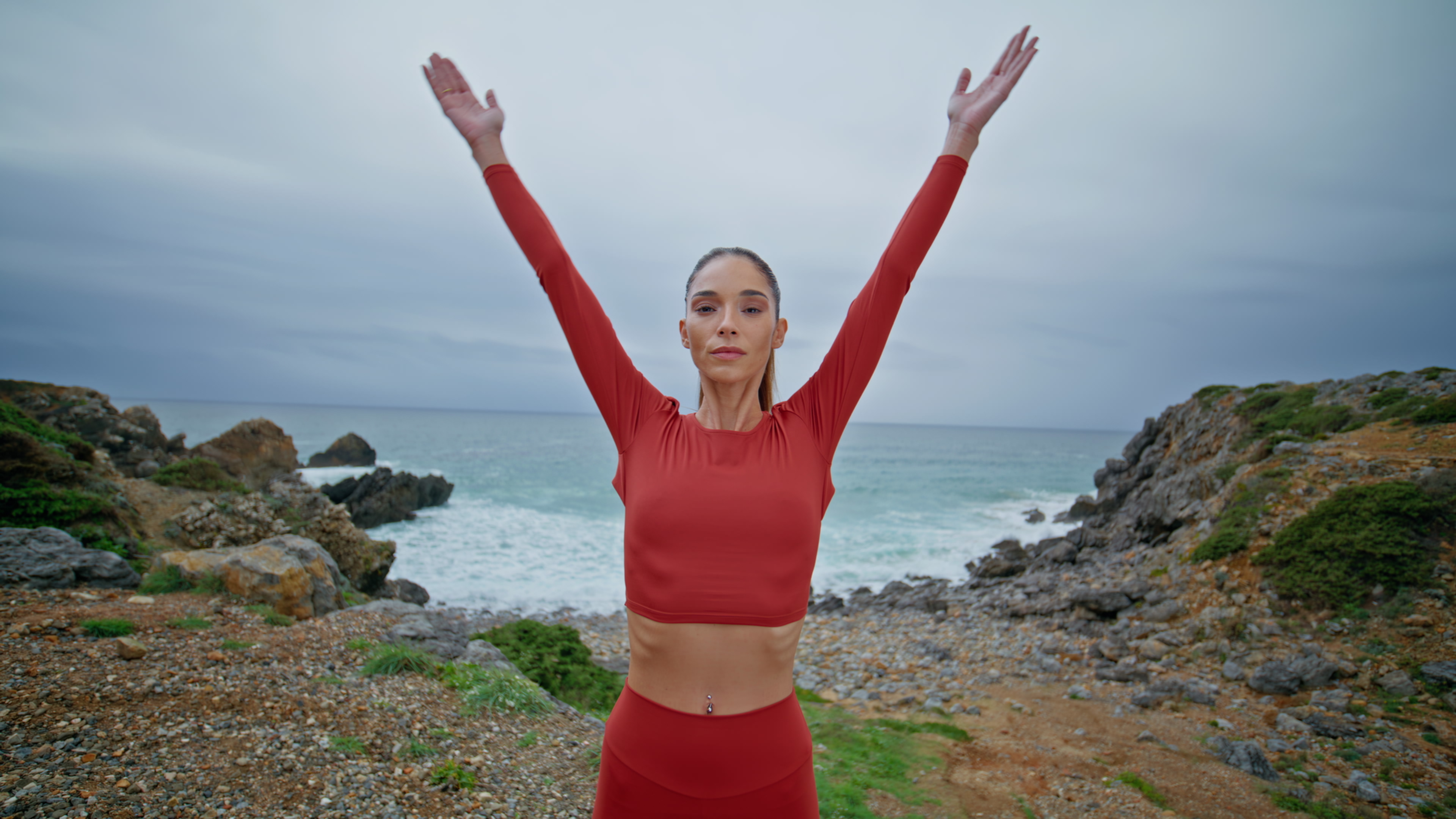
Imagine yourself stretching out like a giant starfish, reaching as far as possible to wake up your entire body. The starfish stretch is a full-body movement that lengthens the spine, increases circulation, and helps boost your energy levels. To do this stretch, stand tall with your feet slightly wider than hip-width apart. Stretch both arms overhead, reaching through your fingertips as if you’re trying to touch the ceiling. If you want to challenge your balance, rise onto your tiptoes and hold the position for a few seconds. Take a deep breath in as you stretch, then slowly release as you lower your arms and heels. This simple movement encourages better posture, relieves stiffness, and is a great way to energize your body after waking up or during a midday slump. It’s a perfect stretch to do after long periods of sitting, as it counteracts compression in the spine and shoulders.
22. Penguin Waddle Stretch – Loosen Up Your Hips
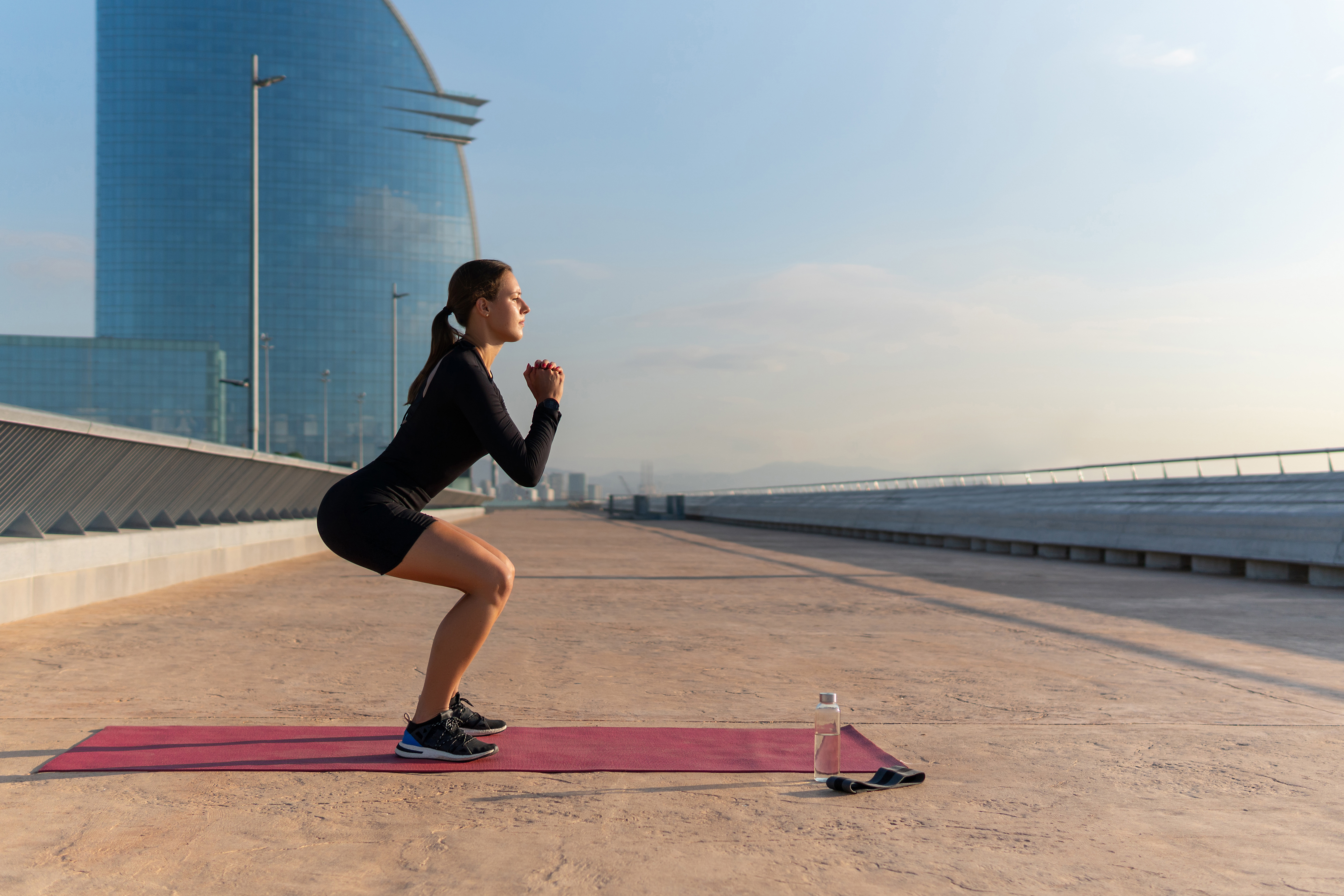
The penguin waddle stretch is a fun and effective way to improve hip mobility while loosening up stiffness in the lower body. This movement mimics the way penguins waddle, gently engaging the muscles around your hips, lower back, and thighs. To begin, stand with your feet slightly wider than hip-width apart. Keep a slight bend in your knees and place your hands on your hips. Slowly shift your weight side to side, allowing your hips to sway naturally as you move. You can exaggerate the movement by lifting one foot slightly off the ground with each shift. Continue waddling for 20 to 30 seconds, focusing on smooth, controlled movements. This dynamic stretch is perfect for warming up before exercise or shaking off stiffness after sitting for long periods. Plus, it’s fun—so don’t be afraid to embrace your inner penguin and enjoy the benefits of a loosened-up lower body!
23. The Lazy Cat Stretch – Wake Up Your Spine Like a Stretching Cat
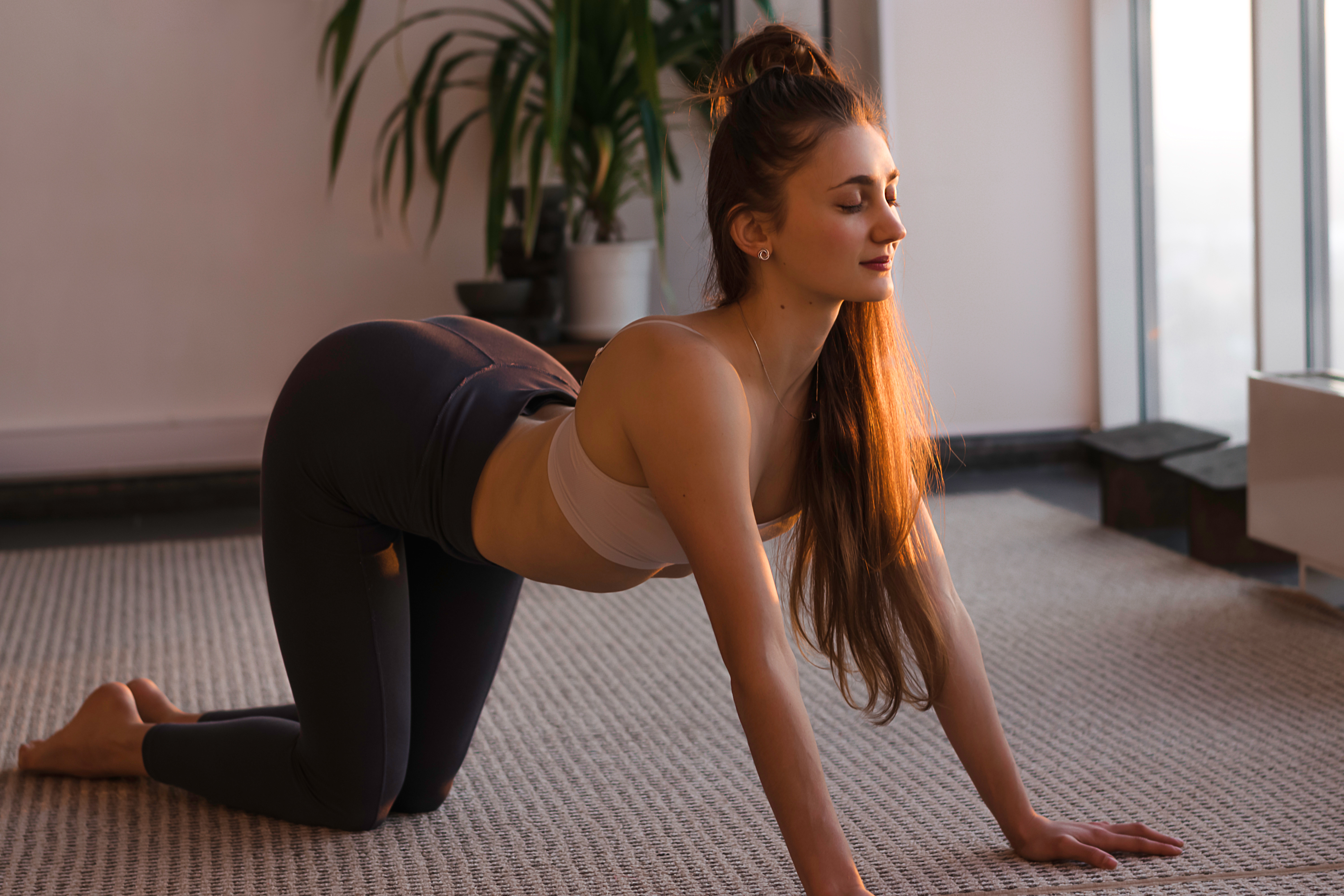
Ever noticed how cats stretch the moment they wake up? This simple yet effective stretch mimics that instinctive movement, releasing tension along the spine, shoulders, and back while improving flexibility. To do it, start on all fours with your hands directly under your shoulders and knees under your hips. On an inhale, arch your back, lifting your head and tailbone toward the ceiling—this is the "cat waking up" phase. Then, on an exhale, round your spine, tucking your chin to your chest and pulling your belly button toward your spine—this is the "lazy cat" phase. Move slowly between these two positions for 8 to 10 rounds, syncing your breath with your movement. This stretch is fantastic for relieving stiffness, improving spinal mobility, and promoting relaxation. Whether you're just waking up or unwinding before bed, channeling your inner lazy cat will leave you feeling looser, lighter, and more limber.
Your Path to a Pain-Free Lifestyle
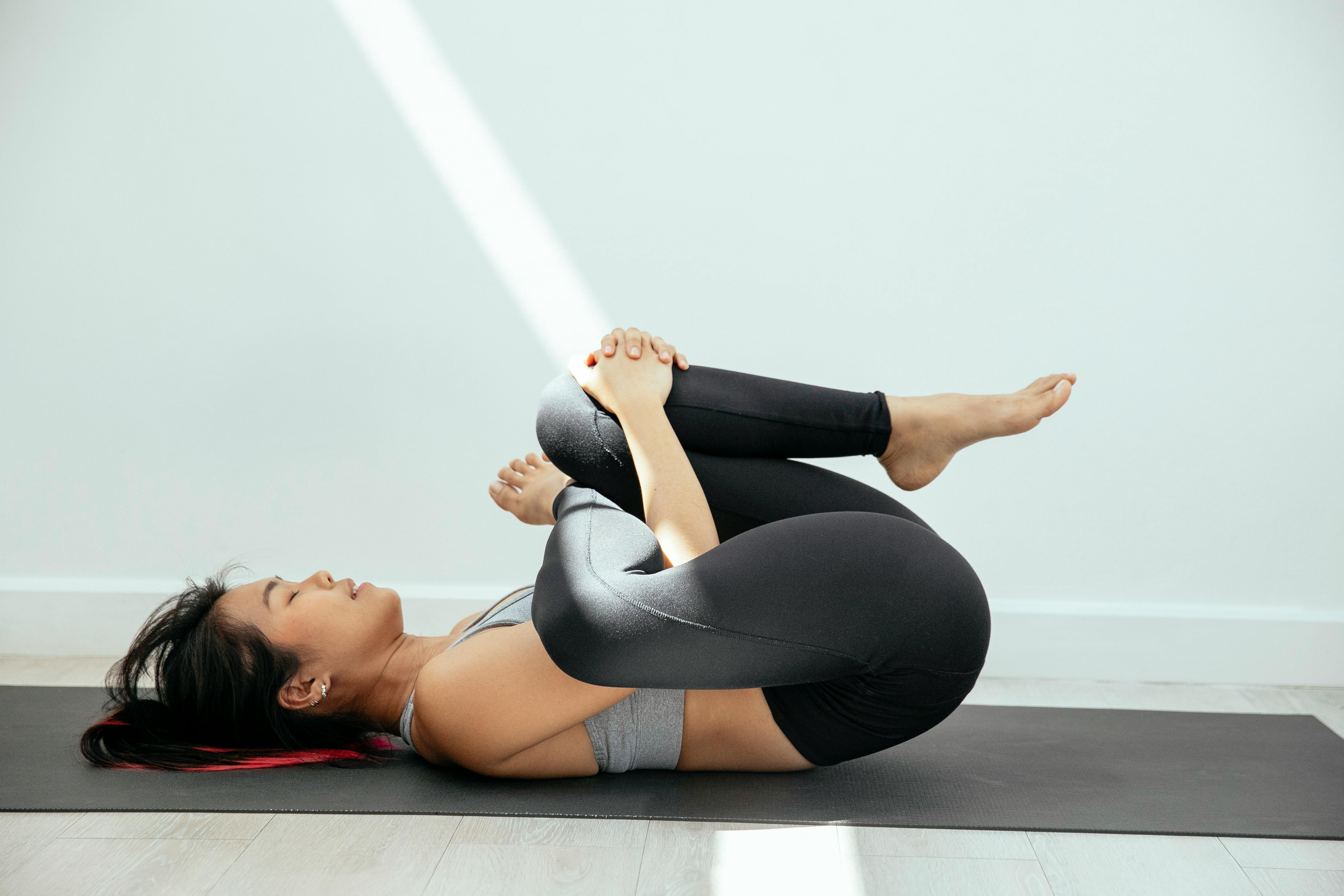
By now, you’ve discovered 23 straightforward stretches designed to target common areas of tension—from the neck and shoulders to the calves and hips. The beauty of these moves lies in their simplicity and adaptability, making them suitable for individuals of all fitness levels, ages, and daily routines. Whether you’re easing into the day with a morning stretch, combatting midday stiffness at work, or winding down before bed, these gentle exercises can seamlessly fit into your schedule. Consistent practice is key. Begin by setting aside just a few minutes each day to focus on stretching, breathing deeply, and tuning into your body’s signals. Over time, you’ll likely observe improvements in posture, range of motion, and overall comfort. You may also find yourself more relaxed and mentally prepared to tackle the challenges of daily life. Moreover, these stretches can complement existing fitness regimens, enhancing recovery and reducing the likelihood of injury. Remember, small steps often lead to significant changes. By embracing these stretches as part of your routine, you’re investing in a healthier, more agile future. So take the next step—honor your body, listen to its needs, and discover the transformative power of a consistent stretching practice. Your journey to a pain-free lifestyle starts now.
